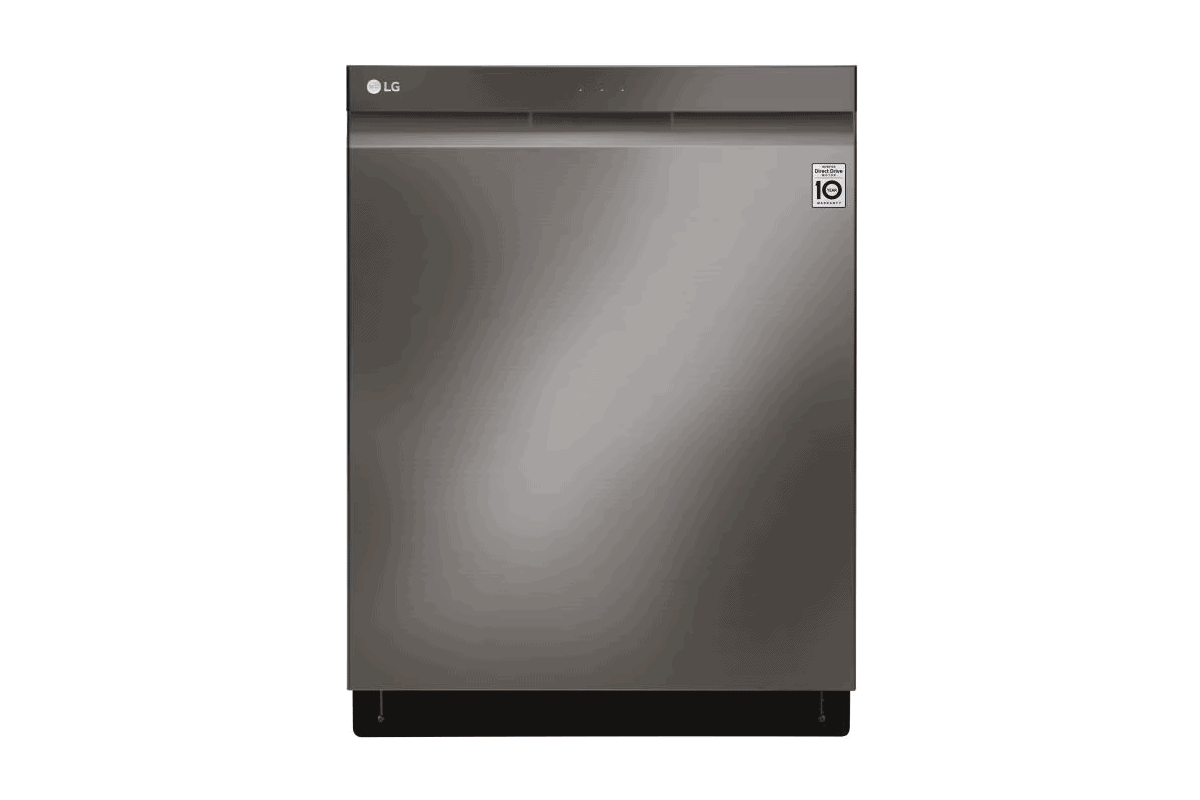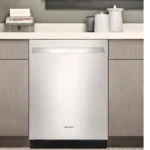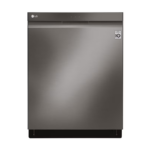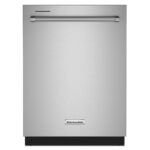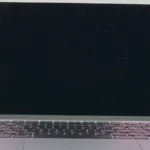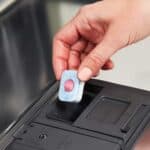Dealing with an OE error on your LG dishwasher can be frustrating, but it’s a common issue that many users encounter. This error code indicates a problem with the dishwasher’s drainage, signaling that water isn’t exiting the machine as it should. Understanding what this error means is the first step toward troubleshooting and getting your dishwasher back in working order. In this article, we’ll explain the reasons behind the LG dishwasher OE error and provide clear, step-by-step instructions on how to fix it.
Whether it’s a clogged filter, a blocked drain hose, or a malfunctioning pump, we’ve got you covered. Let’s dive into solving this problem so you can return to hassle-free dishwashing.Tackling the LG dishwasher OE error doesn’t have to be a daunting task. With the right approach, most homeowners can efficiently resolve the issue and get their dishwasher back to optimal performance. Regular maintenance and prompt attention to signs of drainage problems are key to preventing the error from recurring. Whether it’s a clogged filter or a kinked hose, the solution is often simpler than expected.

Troubleshooting the LG Dishwasher OE Error Code
Understanding the OE Error Code
The OE error code on an LG dishwasher signals a draining issue. It means the dishwasher is having trouble emptying the water from the tub. This can lead to a pool of water at the bottom of your dishwasher, preventing it from completing its cycle.
Potential Causes
Several factors can trigger the OE error code:
- Clogged drain hose: The drain hose might be kinked, bent, or blocked by food debris, preventing water from flowing freely.
- Blocked drain pump: The drain pump, responsible for pumping water out of the dishwasher, could be obstructed by debris or have a malfunctioning impeller.
- Faulty drain pump motor: The motor powering the drain pump might be defective, hindering its ability to pump water efficiently.
- Clogged air gap or garbage disposal: If your dishwasher drains into a garbage disposal or has an air gap installed, these could be clogged, causing a backup.
- Control board issue: In some cases, the problem might lie with the dishwasher’s control board, which controls the drain pump.
Troubleshooting Steps
| Step | Action |
|---|---|
| 1. | Turn off the dishwasher and unplug it. Safety first! |
| 2. | Check the drain hose. Inspect the drain hose for any kinks, bends, or blockages. Straighten any kinks and clear any obstructions. |
| 3. | Clean the drain pump. Access the drain pump, usually located at the bottom of the dishwasher, and remove any debris or obstructions. You may need to consult your dishwasher’s manual for specific instructions. |
| 4. | Check the air gap or garbage disposal. If applicable, inspect and clean the air gap or garbage disposal to ensure they’re not clogged. |
| 5. | Reset the dishwasher. Plug the dishwasher back in and press the “Start/Reset” button to reset the control board. |
| 6. | Run a short cycle. Run a short cycle to see if the OE error code reappears. |
If the Problem Persists
If the troubleshooting steps above don’t resolve the issue, it’s likely a more complex problem, such as a faulty drain pump motor or a control board malfunction. In these cases, it’s advisable to contact LG customer support or a qualified appliance repair technician for further assistance.
Tips to Prevent Future OE Errors
- Scrape food scraps off dishes before loading them. This prevents debris from clogging the drain hose or pump.
- Avoid overloading the dishwasher. Overloading can restrict water flow and increase the risk of clogs.
- Clean the filter regularly. A clean filter helps prevent debris from reaching the drain pump.
- Run a dishwasher cleaner periodically. This helps remove buildup and keep your dishwasher running smoothly.
Key Takeaways
- Understand the OE Error: The LG dishwasher OE error indicates a drainage problem, often caused by a clogged filter, blocked drain hose, malfunctioning pump, or issues with the garbage disposal connection.
- Routine Maintenance is Crucial: Regularly checking and cleaning the dishwasher’s filter and ensuring the drain hose is free of kinks and blockages can prevent the OE error and extend the appliance’s lifespan.
- Check the Pump and Garbage Disposal: A malfunctioning pump or a clogged garbage disposal can also lead to OE error. Inspecting these components for blockages or malfunctions is vital in troubleshooting.
- Step-by-Step Troubleshooting: To address the OE error, inspect and clean the filter and drain hose, check the garbage disposal’s installation, and assess the pump’s functionality. If all else fails, a reset might resolve the issue.
- Preventive Measures Pay Off: Engaging in preventive maintenance like cleaning filters and checking hoses not only resolves the OE error but also ensures optimal dishwasher performance, saving time and avoiding costly repairs.
Reasons Behind LG Dishwasher OE Error
When an LG dishwasher flashes an OE error, it’s telling the user there’s a problem with the water draining out. This error can stem from several issues, each affecting the dishwasher’s ability to function properly.
Firstly, a clogged filter is a common culprit. Over time, food particles and debris build up in the dishwasher’s filter. If not cleaned regularly, this buildup can prevent water from draining out of the unit efficiently.
Secondly, the drain hose might be at fault. If it’s kinked or blocked, water can’t flow through it as needed. This hose carries water out of the dishwasher, so any blockage here directly impacts the machine’s draining capability.
Another potential cause is a faulty pump. The pump plays a crucial role in the dishwasher’s operation, helping to circulate water through the system and drain it out. A malfunctioning pump can’t move water effectively, leading to drainage issues signaled by the OE error.
Lastly, the issue might not be with the dishwasher itself but with the garbage disposal connected to the same drain. If the garbage disposal is full or clogged, it can impede water flow from the dishwasher, contributing to the OE error.
Addressing these issues involves checking and cleaning the filter, inspecting the drain hose for kinks or blockages, evaluating the pump’s condition, and ensuring the garbage disposal is clear. Regular maintenance and timely interventions can prevent the OE error from popping up, keeping the dishwasher running smoothly.
Clogged Filter: A Common Culprit
When an LG dishwasher flashes the OE error, a clogged filter often takes the blame. Dirt and food particles can block the filter, hindering water from draining out. It’s an issue that requires quick action.
Check the Filter Regularly
LG advises homeowners to inspect the filter often. Pulling it out and giving it a good rinse under running water can prevent clogs. Small debris, often overlooked, accumulates over time, leading to bigger problems.
Simple Steps for Cleaning
Cleaning the filter isn’t rocket science. Just follow these steps:
- Turn off the dishwasher and open the bottom rack.
- Remove the filter by twisting it counter-clockwise.
- Rinse it thoroughly under the tap.
- If it’s very dirty, use a soft brush to gently scrub away grime.
- Place it back, ensuring it’s securely fastened.
This routine maintenance keeps the dishwasher running smoothly and efficiently, avoiding the dreaded OE error.
Why It Matters
A clean filter isn’t just about avoiding errors; it also ensures the dishwasher works at its best. Water flowing freely means dishes come out clean, cycle times remain consistent, and energy isn’t wasted. It’s about more than just dodging a repair—it’s essential for optimal performance.
Regularly tackling filter cleanliness can save homeowners from the hassle and cost of more significant issues down the line. It’s a small task that has a big impact on the longevity and efficiency of the appliance.
Blocked Drain Hose: Another Potential Issue
While cleaning the filter is a key step in tackling the LG dishwasher OE error, it’s not the only culprit. A blocked drain hose also stands out as a familiar villain in this scenario. When food particles or other debris clog the hose, water cannot exit the dishwasher, triggering the dreaded error code.
The drain hose connects the dishwasher to the kitchen sink drain or garbage disposal. It’s a pivotal part of the dishwasher’s plumbing. Over time, things like grease, soap scum, and food remnants can stick to the hose’s walls, leading to blockages.
Checking the Drain Hose
To inspect the drain hose:
- First, locate the hose, which is usually behind the dishwasher. You might have to pull the appliance slightly away from the wall.
- Look for kinks or bends. These can stop water flow just as much as a clog.
- If accessible, disconnect the hose and run water through it. If the water doesn’t flow freely, there’s a blockage.
Clearing a hose involves:
- Straightening bends or removing the hose to physically clear clogs.
- Running a plumber’s snake through the hose to dislodge debris.
- Flushing the hose with a high-pressure water stream.
Prevent future clogs by:
- Regularly cleaning the filter to catch food particles before they reach the hose.
- Avoiding disposing of large food pieces or oils in the dishwasher.
Taking care of the drain hose is crucial for the dishwasher’s operation. It ensures water can freely exit, preventing errors and improving the appliance’s effectiveness. By paying attention to both the filter and the drain hose, you greatly reduce the odds of facing the OE error, keeping your dishwasher running smoothly.
Malfunctioning Pump: The Underlying Cause
When troubleshooting an LG dishwasher displaying an OE error, it’s crucial to consider the pump’s role. The dishwasher pump plays a pivotal role in draining water. If this pump malfunctions, the dishwasher cannot expel water correctly, leading to the dreaded OE error.
The pump comprises two main parts: the motor and the impeller. The motor powers the impeller, which moves water through the dishwasher. Over time, these components can wear out or get damaged. Signs of a malfunctioning pump include unusual noises during the drain cycle or water remaining in the dishwasher after a cycle.
To diagnose a pump issue, first, ensure that the dishwasher is unplugged to prevent any accidents. Next, locate the pump under the dishwasher and check for any visible signs of damage or obstructions. Sometimes, small objects or accumulated debris can hinder the pump’s operation.
If visual inspection doesn’t reveal the problem, testing the pump’s electrical continuity with a multimeter is the next step. A lack of continuity indicates the pump needs replacement. However, if the pump appears to be in good working order, the issue might lie elsewhere in the drainage system.
Regular maintenance can help prevent pump problems. This includes cleaning the filter regularly and ensuring no hard objects or grease clog the system. By keeping the pump and its components in good condition, homeowners can reduce the likelihood of encountering the OE error.
Step-by-step Instructions for Fixing the LG Dishwasher OE Error
When an LG dishwasher displays the OE error, it’s signaling a drainage problem. This guide walks users through fixing this issue in clear steps.
First, check the drain hose. It shouldn’t be kinked or clogged. Sometimes, a simple adjustment or cleaning can solve the problem. If the hose is bent, straighten it. For clogs, running water through the hose might clear it.
Next, examine the filter. LG dishwashers have filters that catch food and debris. Over time, these can get blocked. Pull out the bottom rack to access the filter. Clean it under running water and reinsert it properly.
The garbage disposal connection is another area to inspect if recently installed. Often, the knockout plug isn’t removed, preventing water from draining. Ensure this plug is taken out.
If the issue persists, it may be the pump. The pump helps water flow out of the dishwasher. If it’s faulty, water won’t drain, causing the OE error. Listen for a humming sound — a silent pump might be broken.
Lastly, reset the dishwasher. Turn it off at the power source for a minute and then turn it back on. Sometimes, a reset can clear the error and get it working again.
By following these steps, users can potentially resolve the OE error without needing professional help. Regular maintenance, like cleaning the filter and checking the hose, can prevent future issues.
Frequently Asked Questions
What does the OE error signify on an LG dishwasher?
The OE error on an LG dishwasher indicates a problem with the drainage system. It suggests that the dishwasher is unable to drain the water out properly.
How can I fix the OE error on my LG dishwasher?
To fix the OE error, check the drain hose for any kinks or clogs, clean the filter, ensure the garbage disposal connection is clear, and listen for any unusual noises from the pump that might indicate a malfunction.
Can resetting my LG dishwasher resolve the OE error?
Yes, sometimes simply resetting the dishwasher can resolve the OE error. This can be done by unplugging the dishwasher for a few minutes or turning off the breaker before turning it back on.
How often should I perform maintenance on my LG dishwasher to prevent the OE error?
Regular maintenance, including checking and cleaning the drain hose, filter, and ensuring the garbage disposal connection is clear, should be performed periodically to prevent issues like the OE error.

